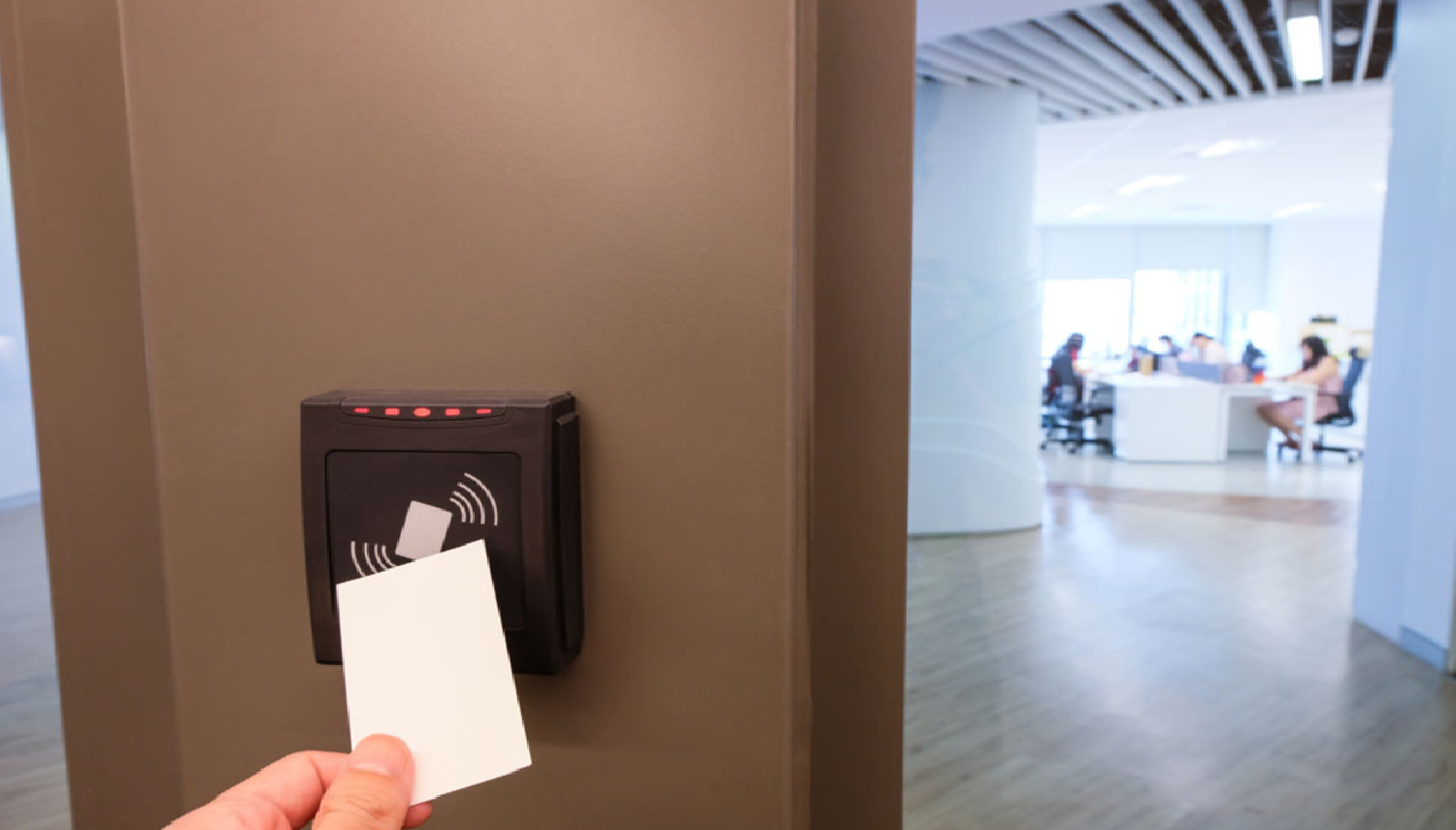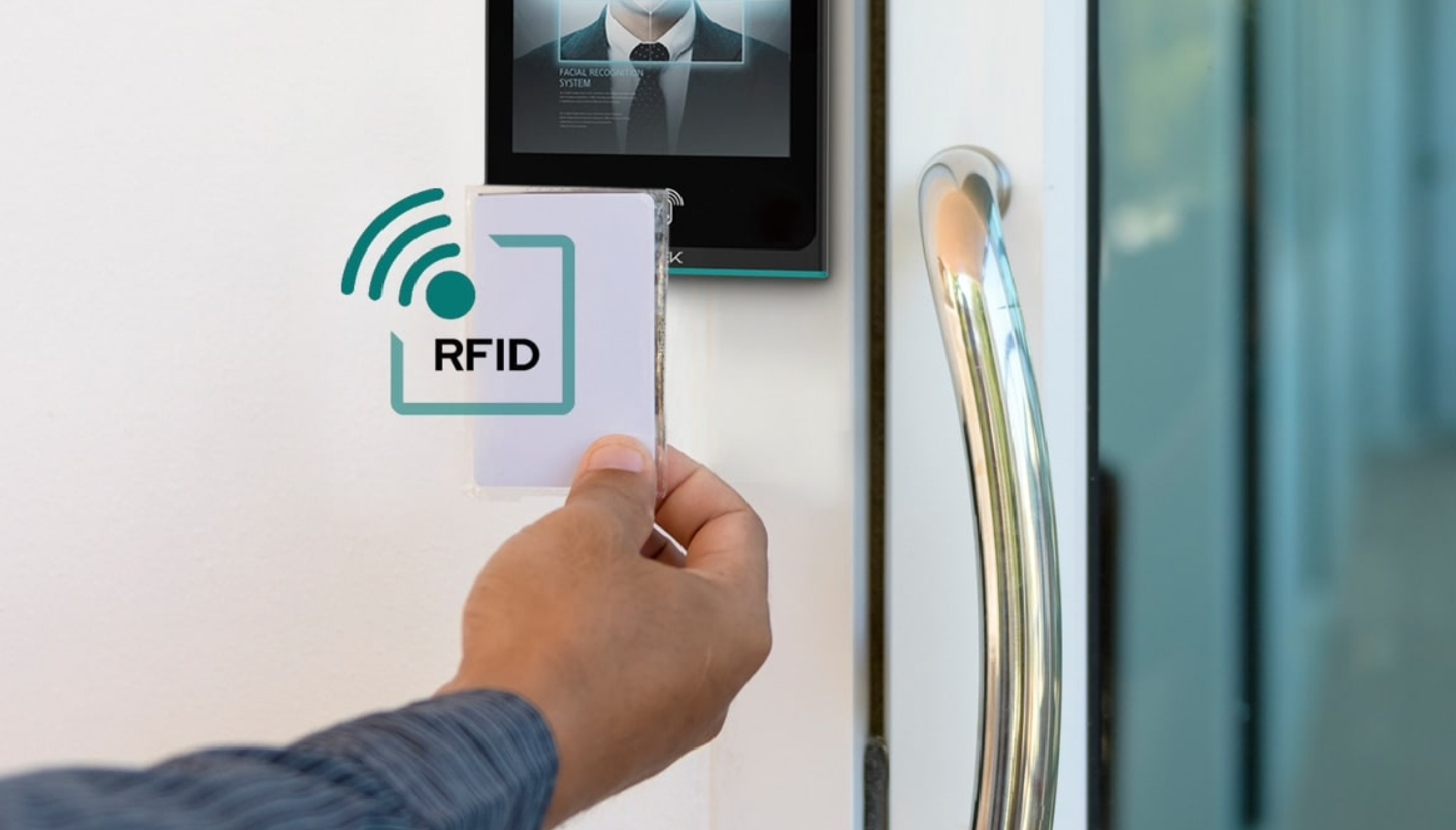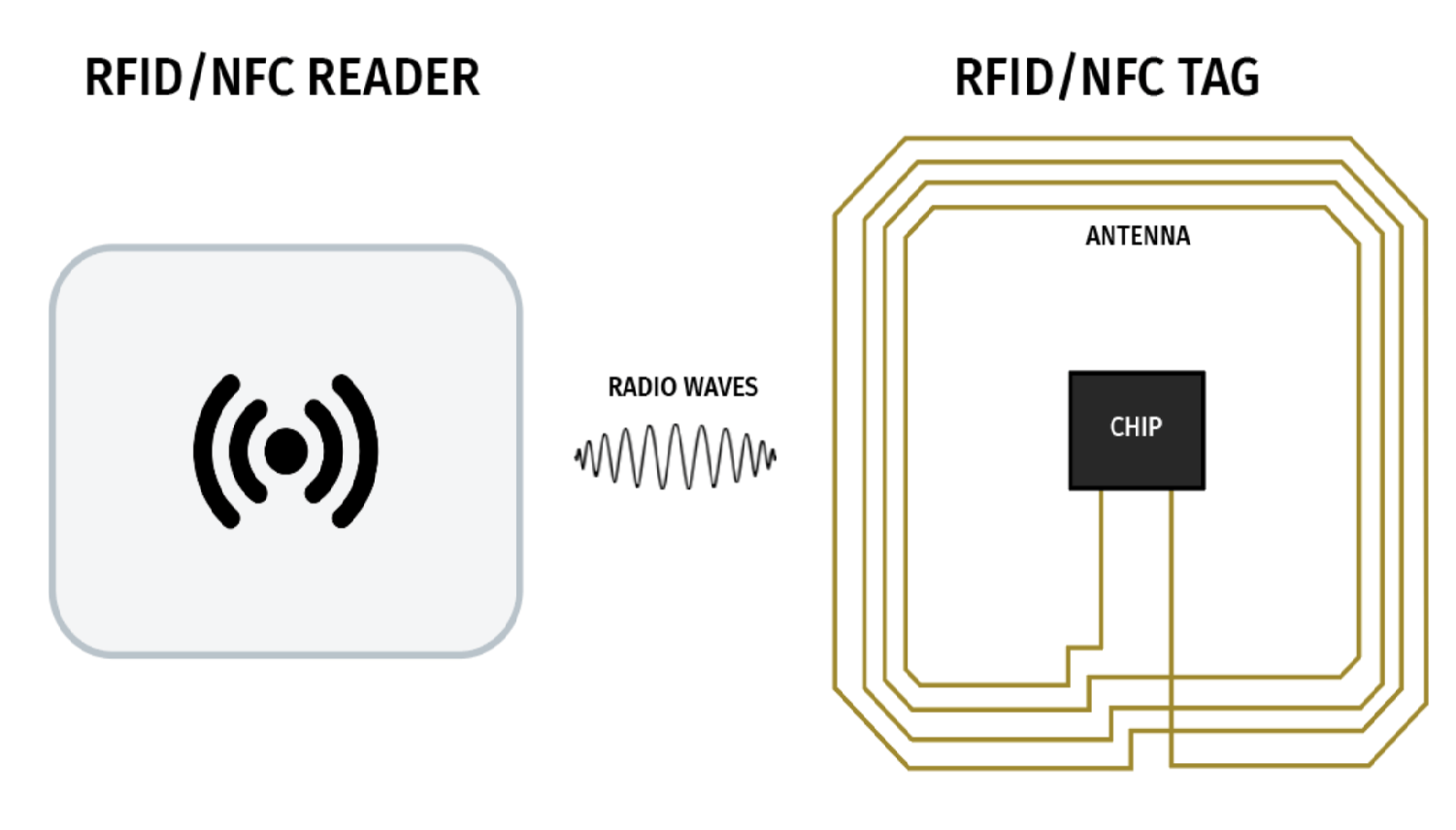The frustration of misplacing an essential RFID card, the anxiety of a potential loss, and the sheer inconvenience of bulk in our pockets. How to add RFID card to iPhone? Hence, get to know about it in the article below.
To add an RFID card to your iPhone, you typically need a compatible app or platform that supports RFID integration. Once installed, you can scan or input your RFID card details, allowing your iPhone to emulate the card for contactless access or transactions.
A method to have all your essential cards right at your fingertips, literally. How to add RFID card to iPhone? Hence, enter the world of digital transformation, where your iPhone isn’t just a communication device but a key to seamless access.
See Also: How To Set Up Suddenlink Email On iPhone: Stay Connected
Contents
Understanding RFID Technology
Imagine a world where doors unlock magically as you approach or payments happen with a mere wave. But why should you care? Well, RFID is everywhere:
- Shopping: Those anti-theft tags at stores? RFID!
- Transport: Ever tapped a card to enter a subway or bus? That’s RFID in action.
- Events: Those wristbands at festivals that let you in? Yep, RFID again.
No direct contact or line of sight is needed, unlike barcodes. Just a simple tap or proximity, and voilà, information is exchanged. In the spirit of Julia Evans, let’s break it down further.
Think of RFID as a conversation. However, the tag is the talkative friend spilling all their secrets, and the scanner is the eager listener. And now, our iPhones want in on this conversation. Hence, let’s dive deeper into how that happens!
Why Add RFID To Your iPhone?
Ever been in that awkward situation where you’re fumbling through your bag, trying to find your office access card while a line forms behind you? Or that moment of panic when you can’t locate your metro card, and the train is just minutes away? We’ve all been there. However, it’s stressful, inconvenient, and downright annoying.
Now, imagine a world where your iPhone, a device almost always in your hand or pocket, doubles up as that access card or metro pass. No more frantic searches. No more missed trains. Just pure, seamless convenience. Adding RFID to your iPhone is also about:
- Security: With advanced encryption and biometric features, iPhones ensure that using iPhone as RFID card data is protected.
- Eco-Friendly: Fewer plastic cards mean a reduced carbon footprint.

- Integration: Combine RFID with other iPhone features, and you’ve got automation magic. For instance, tap to pay and then instantly record the expense in your budget app.
In the playful words of Julia Evans: “It’s like giving your iPhone a superpower!” And who wouldn’t want a supercharged, multitasking iPhone that simplifies life? The future is here, and it’s exciting!
See Also: Your Device Is Missing Important Security And Quality Fixes
Step-By-Step Guide To Adding RFID Card To iPhone
Alright, tech enthusiasts and convenience-seekers, let’s dive into the “how-to” of this RFID magic. How to add RFID card to iPhone? Channeling Julia Evans’ knack for breaking down complex topics, here’s a step-by-step guide:
- Choose The Right App: Before anything, you’ll need an app that supports RFID integration. Apps like ‘CardHQ’ or ‘NFC Tools’ are popular choices.
- Grant Necessary Permissions: Upon launching the app, it’ll request permissions to access your iPhone’s NFC capabilities. Tap ‘Allow’!
- Prepare Your RFID Card: Have your RFID card ready. Whether it’s an access card, payment card, or any other RFID-enabled card, ensure it’s in working condition.
- Scan The Card: Most apps will have a ‘Scan’ or ‘Read’ option. Select it, and when prompted, place your RFID card at the top-back of your iPhone, near the camera. You’ll feel a haptic feedback or hear a sound once the card is detected.

- Review The Data: Post-scanning, the app will display the card’s information. Review to ensure accuracy.
- Save & Name The Card: For easy access, name the card (like “Office Access” or “Metro Pass”). Save it, and voilà, it’s now on your iPhone!
- Test It Out: Before relying on your iPhone entirely, test the scanned card at its respective reader. Ensure it works seamlessly.
- Backup & Security: Always backup your RFID iPhone card data. And for added security, use apps that offer encryption.
- Explore Automation: Now that you’re an RFID pro, explore automation. Hence, integrate with apps like ‘Shortcuts’ to create custom actions post-scanning.
- Stay Updated: Tech evolves rapidly. Regularly update your RFID app to benefit from new features and security enhancements.
See Also: What Is My iPhone Hotspot SSID? Finding Your Network Name
Challenges & Common Issues
Ah, technology! As much as it’s a boon, it sometimes feels like it’s playing a cheeky game with us. But fear not! Channeling Julia Evans’ spirit of tackling tech head-on, let’s dive into some common challenges and their fixes.
- Inconsistent Scanning: Ever waved your iPhone like a wand, hoping for the RFID magic to happen? Inconsistent scanning can be a real buzzkill. Ensure your iPhone’s NFC area (usually near the camera) is close to the RFID tag. Also, some protective cases can interfere, so consider removing them during scanning.
- Data Mismatch: Scanned the card, but the data seems off? Consider trying a different RFID app.
- Compatibility Issues: Not all RFID cards are created equal. Some might not be compatible with your chosen app. However, research and choose apps that support a wide range of use iPhone as RFID card formats.

- Battery Drain: Continuous scanning can be a battery hog. Limit the background activity of your RFID app and only activate NFC when needed.
In the wise words of Julia Evans, “Tech problems are just puzzles waiting to be solved!” So, arm yourself with knowledge, and you’ll conquer any RFID challenge that comes your way.
See Also: How To Set A Countdown On iPhone Home Screen: Time It Right
Safety & Security Concerns
In the digital age, where convenience is king, we often trade off a bit of our privacy. But should we? With RFID technology at our fingertips, it’s essential to pause and ponder the safety and security implications. Channeling Julia Evans’ penchant for clarity, let’s dissect the concerns:
- Unauthorized Access: The most glaring concern is someone maliciously accessing your RFID data. Hence, use apps that encrypt your RFID data, ensuring it’s gibberish to anyone without the decryption key.
- Data Interception: During the scanning process, there’s a tiny window where data can be intercepted. Opt for apps that use secure channels for data transmission, minimizing interception risks.
- Accidental Scans: What if you accidentally scan a malicious iPhone RFID tag? Regularly review and clean your stored RFID data. Be cautious about where you’re scanning.

- Outdated Software: Using outdated apps can expose you to known vulnerabilities. Regularly update your RFID apps. However, developers often release patches for known security issues.
- Physical Security: Losing your iPhone means losing your RFID data. Ensure you have strong lock-screen security. Biometric locks, like Face ID or Touch ID, add an extra layer of protection.
In Julia Evans’ style, remember: “Being tech-savvy isn’t just about using the latest tools; it’s about using them wisely!” Stay informed, stay safe.
Alternative Methods & Apps
While adding RFID cards to your iPhone is a game-changer, it’s not the only trick up the tech sleeve. How to add RFID card to iPhone? With Julia Evans’ enthusiasm for tech alternatives, let’s dive in!
- QR Code Scanners: Before RFID became mainstream, QR codes were the rage. Apps like ‘QR Reader for iPhone’ let you scan and store QR codes, offering a similar convenience to RFID.
- Bluetooth Beacons: Devices like ‘Tile’ use Bluetooth to help you track items. While not the same as RFID, they offer a unique way to keep tabs on your belongings.
- Dedicated RFID Readers: If you’re serious to add RFID card to Apple wallet, consider getting a dedicated RFID reader. However, these devices offer more robust scanning capabilities than a typical iPhone.

- Alternative Apps: Not all RFID apps are created equal. If one doesn’t suit your needs, explore others. ‘NFC Tools’, ‘NFC Reader’, and ‘Simply NFC’ are some popular choices.
- Smart Home Integrations: Combine RFID with smart home tech. Scan an RFID tag to turn on lights, play music, or set a mood.
In the playful spirit of Julia Evans: “The tech world is your oyster! However, don’t just settle; explore, experiment, and find what tickles your tech fancy!”
See Also: How To Connect Bose Speaker To iPhone: A Simple Guide
Future Of RFID And Smartphones
The fusion of RFID and smartphones is like a tech love story in the making. But where is this relationship headed? Channeling Julia Evans’ forward-thinking mindset, let’s peek into the future.
- Imagine walking into a store, picking up items, and simply walking out, with your smartphone handling the payment via RFID. No queues, no fuss. This “grab and go” shopping experience is on the horizon, with trials already underway.
- Healthcare could see a revolution too. Your medical history, stored via RFID on your phone, could be accessed instantly during emergencies.

- And let’s not forget personalization. Enter a Cafe, and the ambient music changes to your favorite tune, thanks to RFID. However, with great power comes great responsibility. Privacy and security will take center stage, demanding innovative solutions.
In Julia Evans’ style: “The future isn’t just about new tech; it’s about reshaping experiences. And RFID and smartphones? However, they’re leading the charge!”
FAQs
Can I use my iPhone as an RFID card?
iPhones with NFC capabilities can interact with NFC tags and certain cards. However, using it as a direct replacement for an RFID access card depends on the system in place and the type of RFID technology used.
Why doesn't my credit card in Apple Wallet match the physical card's NFC?
Credit cards in Apple Wallet use a dynamic security code for transactions, ensuring safety. This means the NFC data from the Wallet might not match the physical card's static data.
Is there a specific NFC reader compatible with Apple Wallet?
Most modern NFC readers should recognize cards from Apple Wallet. However, the data transmitted might differ due to Apple's security protocols.
Why does my transit card in Apple Wallet emit a dynamic number?
Not all transit cards in Apple Wallet have static numbers. Some, like credit cards, might use dynamic codes for added security.
Can I add a custom NFC card to Apple Wallet?
Currently, Apple Wallet doesn't allow users to create custom NFC cards with specific data. Only supported cards and passes can be added.
Conclusion
In the ever-evolving world of technology, the amalgamation of RFID and smartphones is a testament to how innovation can simplify our lives. From the convenience of carrying fewer cards to the promise of futuristic shopping experiences, the possibilities seem boundless.
How to add RFID card to iPhone? But, as Julia Evans often reminds us, with every tech advancement, it’s crucial to tread with awareness, ensuring our data’s safety and privacy. However, as we stand on the cusp of this exciting tech frontier, one thing is clear: the marriage of RFID and smartphones is reshaping our digital landscape, promising a future filled with convenience, efficiency, and endless potential.
See Also: How To Get Null’s Royale On iPhone: Clash In A New Way

Dale Fox is an Editor, helping people get the most out of their technology. He’s been a tech nerd ever since childhood, when he used the money from his first job as a paperboy to buy a subscription to GamesMaster magazine, and has a whole room at home dedicated as a shrine to the countless gadgets he’s purchased over the decades. Dale was previously a presenter, reporter and editor in China, where he also worked as a copywriter for OnePlus at its Shenzhen HQ.

